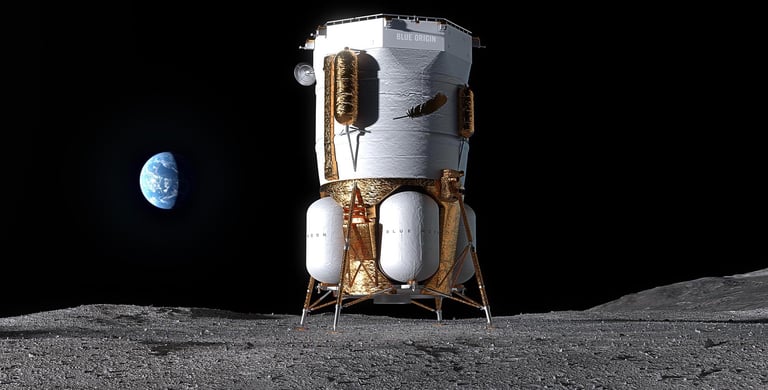NASA Taps Blue Origin for $6.1M Lunar Mission, Launching SCALPSS Camera in 2025
August 12, 2024
NASA has selected Blue Origin to transport the SCALPSS camera system to the moon on its inaugural lunar lander mission, which is scheduled for March 2025.
This task order, valued at $6.1 million, requires the SCALPSS payload to reach the lunar surface by the end of 2025, contributing to the Artemis program's first mission.
The mission is categorized as a 'Justification for an Exception to Fair Opportunity,' allowing NASA to award the contract to Blue Origin without a competitive bidding process.
Blue Origin's Blue Moon lander, which stands 8.05 meters tall, is significantly larger than other commercial lunar landers and can carry up to three tons of payload.
The lander is powered by the BE-7 engine, which produces up to 10,000 pounds-force, exceeding NASA's requirement of at least 8,000 pounds-force for the mission.
The SCALPSS payload is designed to study the interaction between engine plumes and the lunar regolith in the south polar regions, which will aid in planning future crewed landings.
Technologies developed for the initial Mark 1 version of the lander will inform the design of a Mark 2 version, which is intended to transport astronauts to and from the lunar surface.
NASA has also awarded Blue Origin a second Human Landing System contract to develop the Mark 2 version, following the initial award to SpaceX's Starship in 2021.
The Blue Moon MK1 Pathfinder mission aims to demonstrate systems for future lunar missions and gather critical environmental data.
Previously, a SCALPSS unit was successfully flown on Intuitive Machines' lander in February, and another unit is set to accompany Firefly Aerospace's Blue Ghost lander later this year.
Blue Origin plans to launch the Blue Moon MK1 Pathfinder mission using its New Glenn rocket, with initial launches anticipated as early as March 2025.
Summary based on 1 source
Get a daily email with more Space News stories
Source

SpaceNews • Aug 12, 2024
NASA payload to fly on first Blue Origin lunar lander mission